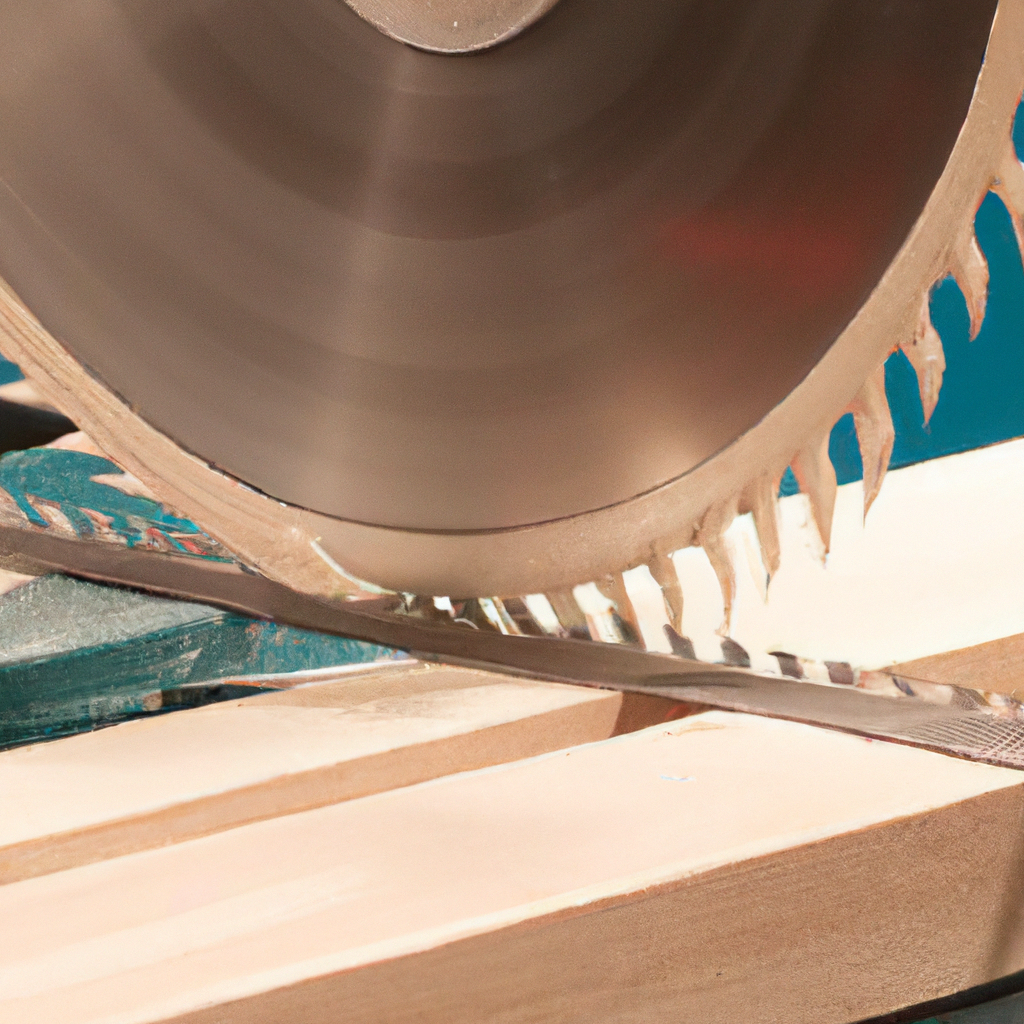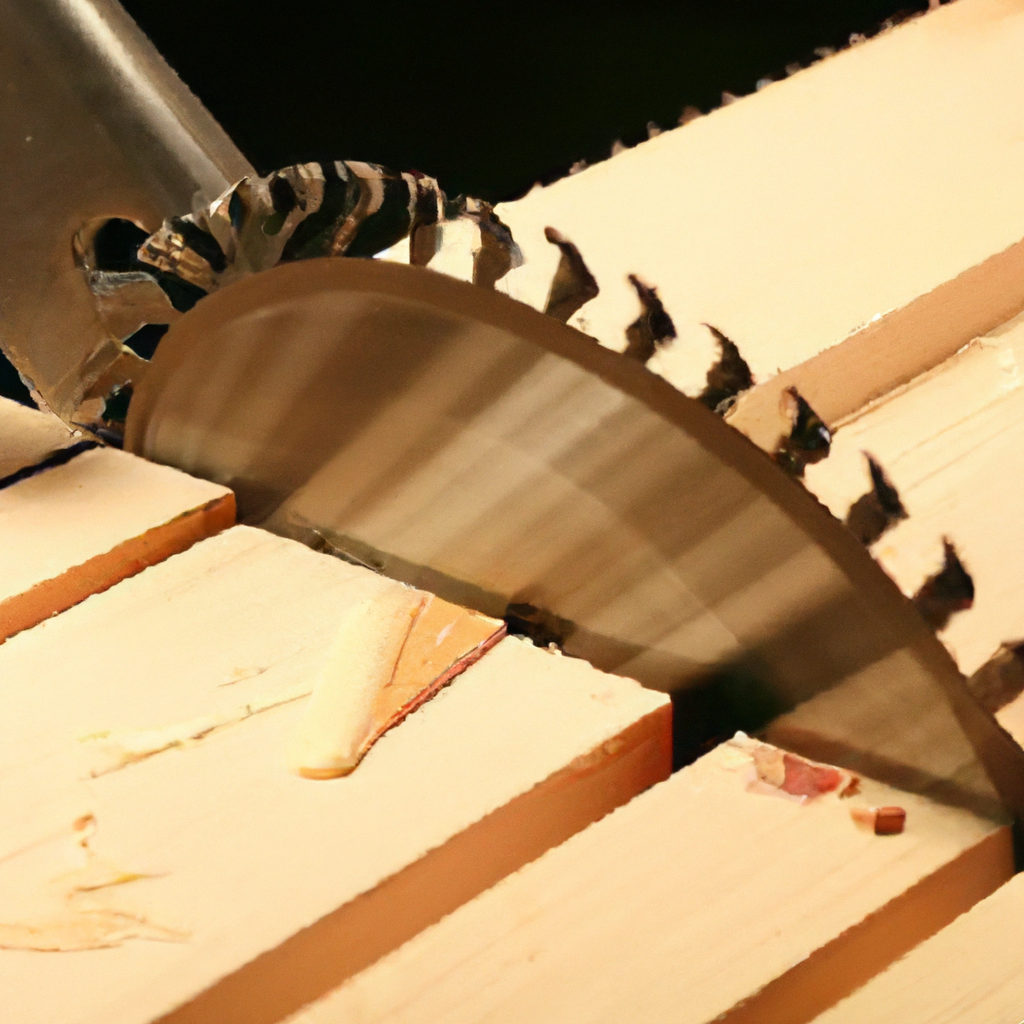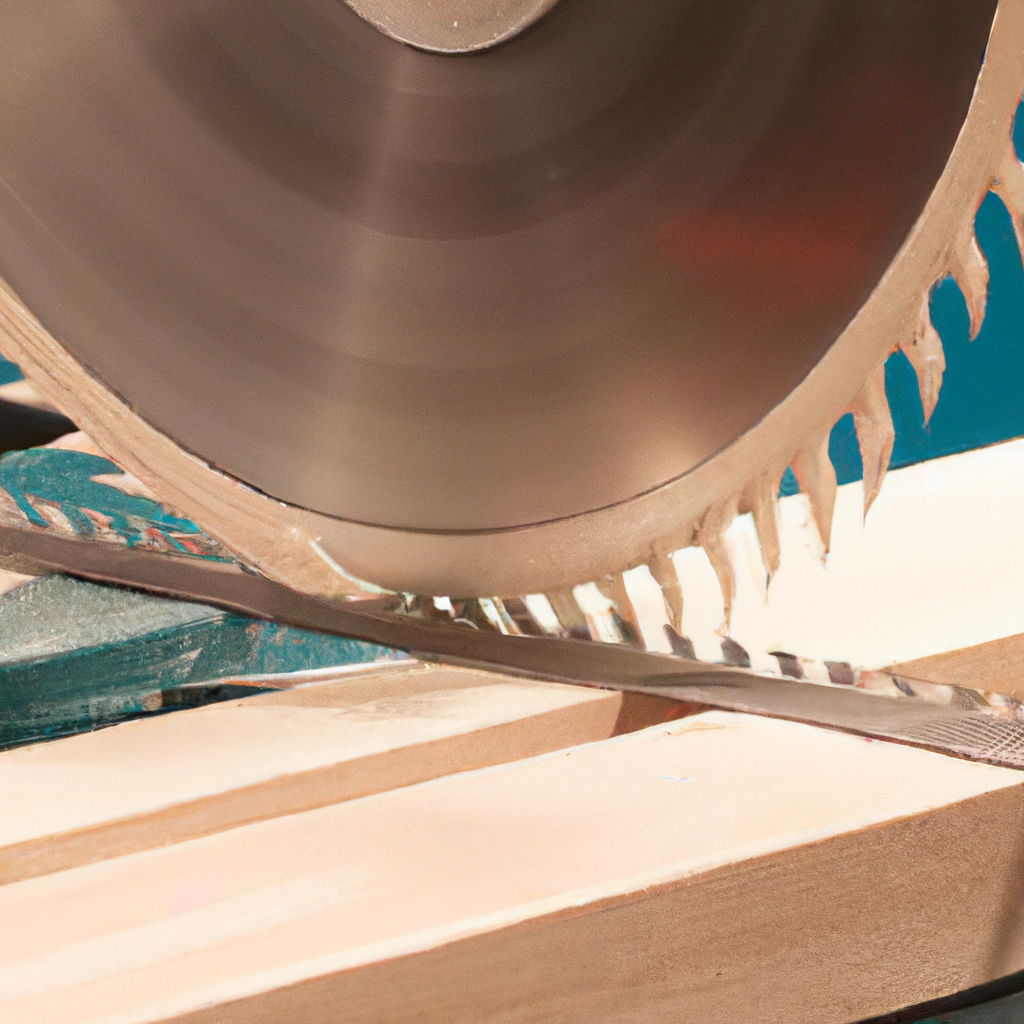Table saw rip capacity is a crucial factor to consider when purchasing a table saw. It refers to the maximum distance between the saw blade and the fence, determining the width of the board or material you can cut. In simpler terms, it is the measurement from the blade to the edge of the table saw, showcasing the saw’s cutting abilities. Understanding rip capacity is essential to ensure that your table saw is capable of handling the projects you plan to tackle. Whether you’re a DIY enthusiast or a professional woodworker, knowing what table saw rip capacity entails is essential for achieving accurate and precise cuts.

Table Saw Rip Capacity
Definition
Table saw rip capacity refers to the maximum distance between the blade and the rip fence on a table saw. It determines the maximum width of material that can be cut smoothly and accurately. A larger rip capacity allows for cutting wider materials, while a smaller rip capacity limits the size of the materials that can be cut.
Importance
Having a sufficient rip capacity on a table saw is crucial for several reasons. It enables the saw to accommodate various materials, enhances safety during cutting operations, and increases efficiency in woodworking projects.
Factors Affecting Rip Capacity
Several factors can affect the rip capacity of a table saw. The blade size, table size, and space limitations are three significant factors that determine the maximum width of materials a table saw can handle.
Blade Size
Relationship with Rip Capacity
The blade size directly affects the rip capacity of a table saw. A larger blade allows for a wider rip capacity, as it can cut through greater thicknesses of material. Typically, table saws are designed to accommodate blades ranging from 8 to 12 inches in diameter.
Choosing the Right Blade Size
When selecting a blade size for your table saw, it is essential to consider the types of projects you will be working on. If you primarily work with smaller materials, an 8 or 10-inch blade may be sufficient. However, if you frequently work with large hardwood sheets or thick lumber, a 12-inch blade would be more appropriate.
Compatibility with Table Saw
It is crucial to ensure that the chosen blade size is compatible with your table saw. The table saw’s arbor size, which is the shaft that holds the blade, must match the blade’s mounting hole diameter. Many table saws come with an arbor size of 5/8 inch, which is compatible with most common blades.

Table Size
Connection to Rip Capacity
The size of the table on a table saw is another factor that affects the rip capacity. A larger table provides more support for wider materials, enabling you to make accurate and precise cuts. A smaller table, on the other hand, limits the size of materials you can work with.
Considering Workspace Constraints
When determining the table size for your table saw, it is essential to consider the available workspace in your workshop. If you have limited space, a small table saw with a compact footprint might be more suitable. However, if you have a spacious workshop, a larger table saw with an extended table can provide more versatility and support for larger projects.
Matching Table Size with Projects
The size of your typical woodworking projects should also influence the choice of table size. If you frequently work with large sheets of plywood or long pieces of lumber, a table with extended side wings or additional table attachments can provide the necessary support to handle these materials effectively.
Space Limitations
Determining Available Space
One of the key factors to consider when choosing a table saw is the available space in your workshop. If you have limited space, it may be challenging to accommodate a full-size table saw with a large rip capacity. However, there are options available, such as compact or portable table saws, that are designed to fit into smaller workshops.
Choosing Portable or Stationary Table Saw
If you have limited space, a portable table saw could be a practical solution. Portable table saws are typically lighter and more compact, making them easier to move and store. They often have a smaller rip capacity but are still capable of handling a wide variety of projects.
For those with ample space in their workshop, a stationary table saw offers a more robust and stable platform. These table saws generally have larger rip capacities and are better suited for heavy-duty cutting tasks.
Adapting to Small Workshops
Even in small workshops, it is still possible to work with a table saw. By utilizing space-saving techniques such as installing the table saw against a wall or using foldable extension tables, it is possible to maximize the available workspace and still have sufficient rip capacity for most projects.
Accommodating Various Materials
Versatility for Different Cuts
One of the primary benefits of having a table saw with a generous rip capacity is the ability to accommodate a wide range of materials. Whether you’re cutting narrow strips for trim work or wide panels for cabinetry, a larger rip capacity ensures that you can achieve accurate and clean cuts.
Handling Large or Wide Sheets
A table saw with a significant rip capacity is particularly useful when working with large or wide sheets of material. Whether it’s plywood, MDF, or solid wood boards, a larger rip capacity enables you to cut these materials accurately and safely, minimizing the risk of tear-out or inaccurate cuts.
Supporting Different Projects
Woodworking projects vary in size and complexity, and having a table saw with adequate rip capacity ensures that you can handle a wide range of projects. Whether it’s building furniture, constructing cabinets, or crafting intricate joinery, a table saw with a sufficient rip capacity provides the versatility needed to tackle different woodworking tasks effectively.
Enhancing Safety
Reducing Kickback Risk
Kickback, which occurs when a workpiece is propelled back toward the operator, is a significant safety concern when using a table saw. By having a table saw with an appropriate rip capacity, you can position the rip fence at a safe distance from the blade, reducing the risk of kickback and promoting safer cutting operations.
Maintaining Blade Guard Integrity
Properly functioning blade guards are vital for operator safety when using a table saw. With a larger rip capacity, there is enough space to accommodate the blade guard and still achieve accurate cuts. This ensures that the blade guard can do its job effectively by providing a physical barrier between the operator and the spinning blade.
Promoting Proper Workpiece Positioning
Having a table saw with a sufficient rip capacity also allows for proper workpiece positioning during cutting operations. It enables you to position the workpiece securely against the fence, ensuring stability and accuracy throughout the cut. This promotes safer working conditions by reducing the risk of the workpiece shifting or becoming unstable during the cutting process.
Increasing Efficiency
Reducing Additional Setup Steps
With a larger rip capacity, you can make wider cuts without having to reposition or rotate the workpiece. This saves time and reduces the need for additional setup steps. Whether it’s ripping long stock or making repetitive cuts, a table saw with a sufficient rip capacity improves workflow efficiency by minimizing the time and effort required for material preparation.
Minimizing Material Waste
By having a table saw with a generous rip capacity, you can optimize material usage and reduce waste. With the ability to cut wider materials, you can maximize the yield from each sheet or board, minimizing offcuts and scrap material. This not only saves money but also promotes eco-friendly woodworking practices by minimizing unnecessary waste.
Improving Workflow
A table saw with a sufficient rip capacity streamlines the woodworking process by eliminating the need for additional tools or excessive material handling. It allows for faster and more efficient cutting operations, enabling you to complete projects in a shorter time frame. This improved workflow translates to increased productivity and overall satisfaction with the woodworking process.
In conclusion, table saw rip capacity plays a crucial role in woodworking projects. It determines the maximum width of materials that can be cut, accommodating various materials, enhancing safety, and increasing efficiency. Factors such as blade size, table size, and space limitations must be considered when choosing a table saw with an appropriate rip capacity. By choosing the right combination of rip capacity and other features, you can ensure a table saw that meets your woodworking needs effectively and provides a safe and efficient cutting experience.

